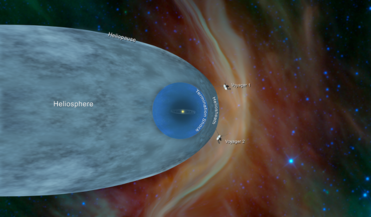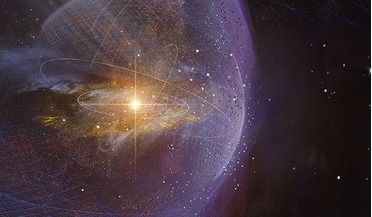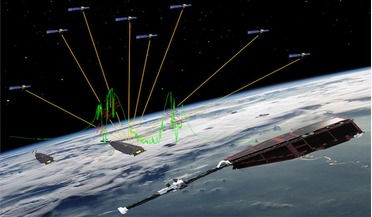 October 2019
Electric orbit raising and space weather
October 2019
Electric orbit raising and space weather
..., high-energy charged particles ejected by the Sun can stream into the Earth’s magnetosphere, the magnetic bubble that surrounds the planet and acts as a protective barrier to interplanetary space. Once here, the movement of the...
 11 December 2018
Voyager 2 joins its twin in interstellar space
11 December 2018
Voyager 2 joins its twin in interstellar space
Going where only one other spacecraft in history has gone before, Voyager 2 crosses the protective bubble of the heliosphere surrounding the planets and ventures into the realm of interstellar space to join with its ...
 March 2021
iPhone moment for the Earth observation industry
March 2021
iPhone moment for the Earth observation industry
...model can only be done by gaining expertise in the vertical of interest. Therefore, it is necessary to step out of the ‘EO bubble’ as far as possible in order to appreciate the customer’s perspective. Finally, it might be the case that EO data is not...
 January 2022
Revealing the magnetic universe
January 2022
Revealing the magnetic universe
...role of the heliosphere in protecting us from the increased cosmic-ray intensity that exists outside our magnetic bubble Magnetic fields appear to arise in the infant universe from inhomogeneities and anisotropies of electric charges. Theory suggests...
 31 October 2016
Swarm constellation helps figure out why satellites lose their GPS signal
31 October 2016
Swarm constellation helps figure out why satellites lose their GPS signal
... between launch in November 2013 and March 2015. These losses in tracking signal were down to equatorial plasma bubbles. The green line denotes the geomagnetic equator. Image: NASA blue marble/GFZ Potsdam/ESA Of course...
 November 2017
Radiation protection for space colonists and travellers
November 2017
Radiation protection for space colonists and travellers
... outside the second smaller field. This would create a magnetically neutral bubble around the ship, so as not to interfere with equipment etc. with a larger bubble of high magnetic strength farther out. This shield system would run...